Maximising the production potential on your farm before looking to expand to new pastures is a sensible approach to good management. That is exactly what Andrew Carolan decided to do on his farm in Dumheeda, Kingscourt, which is located on the Cavan-Meath boarder.
Andrew recently took over management of the home farm from his father Austin. The land was very wet, especially in the shoulders of the year which made early and late grazing almost impossible. “Most years, it would be May before I could turn cattle out to grass and they would be back inside by late September or early October,” said Andrew.
He wanted to increase the number of days cattle spent at grass but the ground was usually too wet for early turnout. “The land was fine for summer grazing normally but once the rain came in the back end, fields would become mucky and untrafficable and the cattle would just have to come back indoors,” he explained.
Andrew acquired the services of Dessie Taaffe, who runs a contracting business under the name Eagle Plant Hire, Tallanstown, Co Louth, to carry out drainage work on 5.5 acres (2.23ha) as an initial trial before draining larger fields. The drainage work was a success and he decided this year to drain a 16.5ac (6.66ha) field.
Andrew works by day in Ulster Bank and admits that much of the infrastructure investment on the farm is being funded through his off-farm income. After the drainage work, he plans on ploughing and reseeding, as well as installing a paddock-grazing system. The combination of well-drained ground and improved grazing infrastructure will allow Andrew to increase stocking rate substantially and increase days at grass. “I am under no illusion that this work is expensive but I really enjoy improving my land and I am looking forward to being able to drive beef output in the future,” Andrew explained.
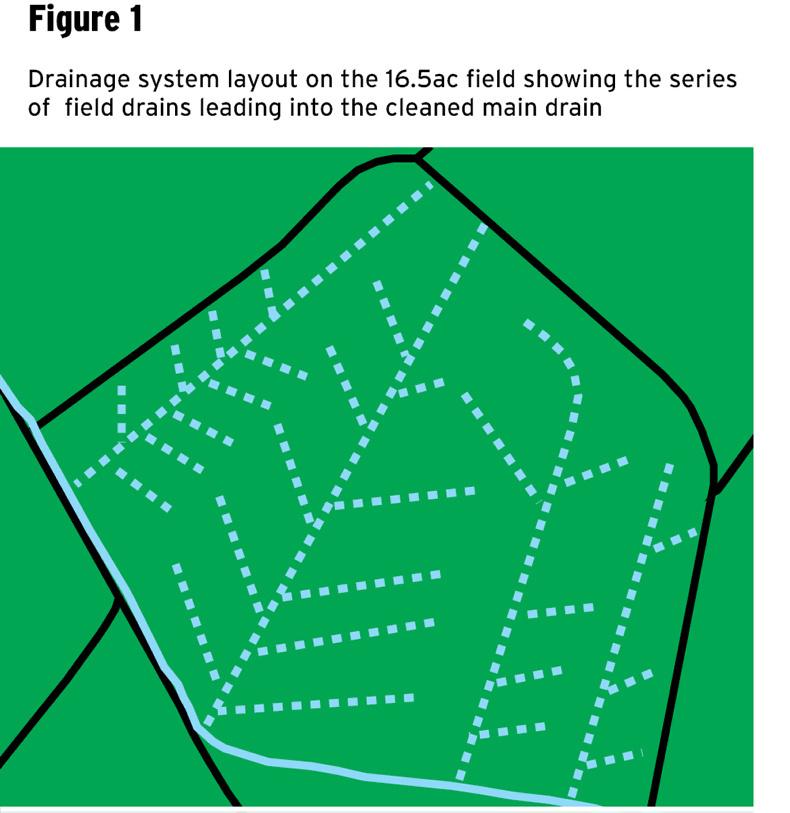
Drainage
Last week, the Irish Farmers Journal visited Andrew’s farm to see how drainage work was progressing. The field is located on a slope and when I visited it seemed dry and in fairly good condition. However, Dessie Taaffe said it was a different situation last spring. He said when he travelled down the field on his excavator to dig test pits, he found it very difficult to get back up the hill and left dip tracks in his wake.
According to Dessie, the most important thing you can do when carrying out any type of drainage work on land is to check the outlet from the main drain. “If the main drain is blocked or clogged up with silt, you have no business draining the field,” he explained.
Dessie has over 40 years’ experience carrying out drainage work and can judge by eye if the outlet in the main drain of the field is working to its potential. This is especially important in times of heavy rainfall when a clogged-up drain will back up with water.
Sometimes, where the outlet is not working well, Dessie looks for permission from neighbouring farmers to clean out the drains until there is sufficient depth and they are clear of blockages.
After checking the drains, Dessie will walk the field to assess what might be required and he will then be able to give the farmer a guideline price. If the farmer is happy for the work to go ahead after receiving the initial quote, he will dig a series of test pits to establish the water table. The test pits allows identification of the soil type, soil texture and permeable layers.
After digging out the pit in very wet soils, water will start to seep inside from the permeable soil layers. Dessie said that in some soils it can take up to 24 hours before the water will show up in the pit. The height at which the water settles in the pit indicates the height of the water table in the land. In this field, the water table was within a foot of the surface, which causes surface problems, especially during wet weather.
Figure (above)
From analysing the main drainage system (the open drain at the bottom of the field and its outlet) and the soil test pit, Dessie decided on the most suitable type of field drainage system for the land.
He installed a groundwater drainage system because the heavy soil profile had a permeable layer. The water will be able to flow sidewards through the free draining layer into the stone and pipes and through them away to the outlet.
Figure 1 shows an outline of the drainage system planned for Andrews’s farm. The open drain at the bottom of the field has been cleaned and now has a good outflow. A series of piped field drains running up the hill are being installed and these drains will be fed by several lateral stone drains.
The lateral stone drains will be located to catch water flowing down from the hill and will be positioned strategically above wet spots in the land.
During the drainage work, Dessie came across old plastic perforated pipes from a drainage job carried out 30 years ago. He said this drainage system did not work because the pipes were not put down deep enough and they eventually filled up with muck and silt.
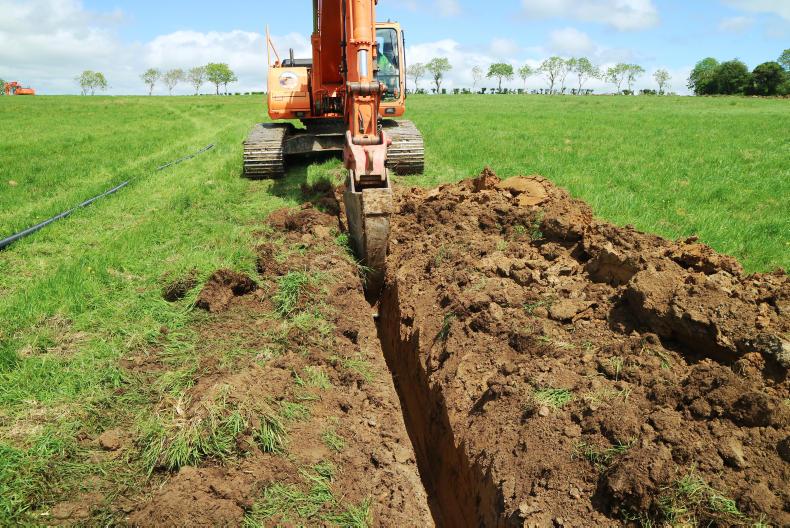
Pipes
The piped field drains are 1.09m to 1.17m deep and the lateral drains are 0.8m to 0.83m deep.
“A 13t machine is a waste of time for digging these deep drains. You need at least a 20t digger to carry out the work at speed; I use a 28t machine,” explained Dessie. The depth of the drains is dependent on the contour of the land. Dessie is well-practised on the excavator and can follow a slope with his eye, but he also has a laser unit on a tripod and it’s a useful back-up where a pipe is laid on the level. The piped drains and lateral drains are strategically placed to collect the optimum amount of water. Dessie said that it is very important to keep the ground at the base of the drain firm. He pulls the bucket through the clay, which minimises disturbance to the side walls of the bank. By keeping the bottom of the drain firm and even, the chance of a blockage in the pipe is eliminated, according to Dessie. He uses the reel on the stone cart to lay out the plastic drainage piping beside the open drain first. This is much easier than trying to lay it out by hand. When it is unrolled he places the piping in the drain and then uses the stone cart to cover the piping with drainage stone.
Approximately 1,000m of 80mm diameter drainage piping and 600m of 100mm drainage piping will be used on the land. The larger diameter piping will be used in places where he expects a greater volume of water to flow.
Drain
In total, there will be 2,500m to 3,000m of drain dug (some lateral drains will not be piped) and there will be 350t to 400t of drainage stone used.
The stone consists of 50mm to 60mm cut whinstone. Practice is needed using a stone cart. Although it looks straight forward to drive, Dessie claims it is not as easy as it seems. “If you drive too close to the bank, especially in wet weather, it might collapse. If you drive too fast, you won’t cover the pipe sufficiently and if you drive too slow you will put too much stone down,” explained Dessie.
He places 20in of stone in the main drain and 15in in the lateral drains. He advises not to fill the drains to the top because this will add significantly to the cost and it doesn’t offer any drainage advantage.
Back-filling
“Don’t back-fill when it is wet, back-fill when it is dry and don’t drive the track on it – otherwise you will compact the soil in the drain like a wedge,” said Dessie. He often leaves drains open a week before back-filling to allow the clay to dry out; otherwise it would not settle properly in the drain.
Sometimes, if he was draining ground in November it would be the following March before the drain is filled in. Where the pipes meet the main open drain (cleaned open drain pictured), Dessie uses solid wall piping and doesn’t stone all the way to the bank. “This way, the water coming from the pipes can’t undercut the clay underneath and the banks won’t slip,” he explained.
Every drainage job is different and plans often become altered during drainage work according to Dessie. He says to dig, pipe, stone and back-fill field drains it costs €2.50/m to €3/m. This cost excludes material (piping and stone) and VAT (13.5%) – farmers get the VAT back. Stone usually costs €1/m (excluding VAT) and piping can cost 60c to €1/m excluding VAT. Dessie says on average drainage work costs approximately €5/m, excluding VAT, depending on the size of drainage pipe used.












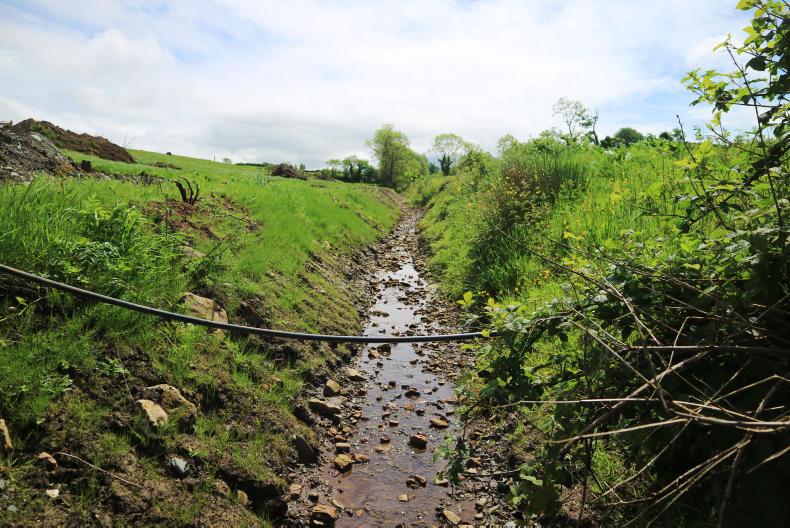
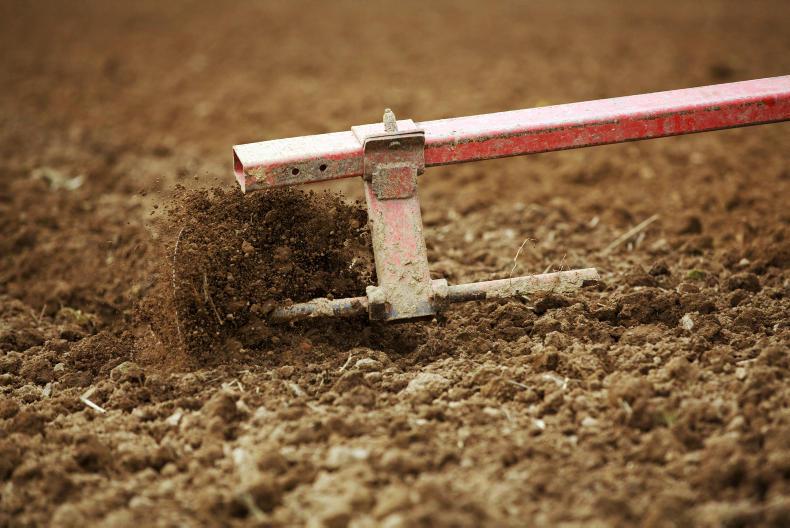

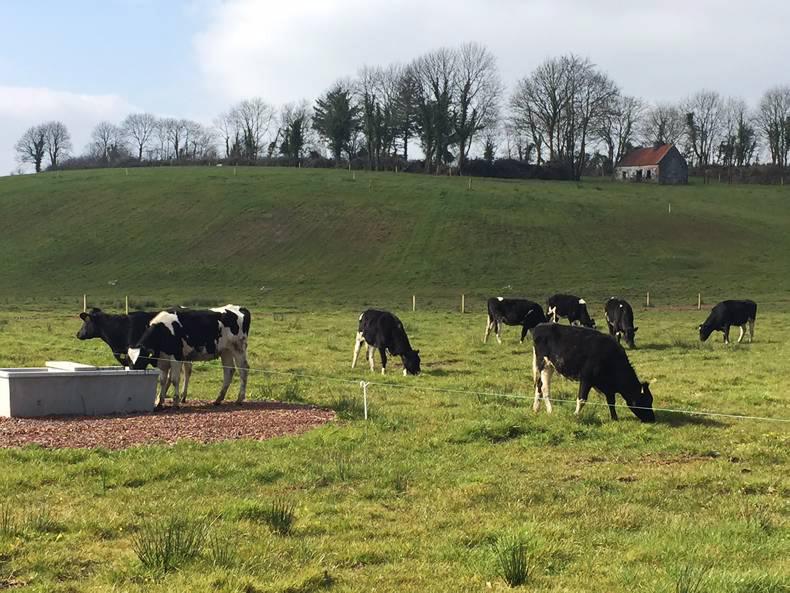
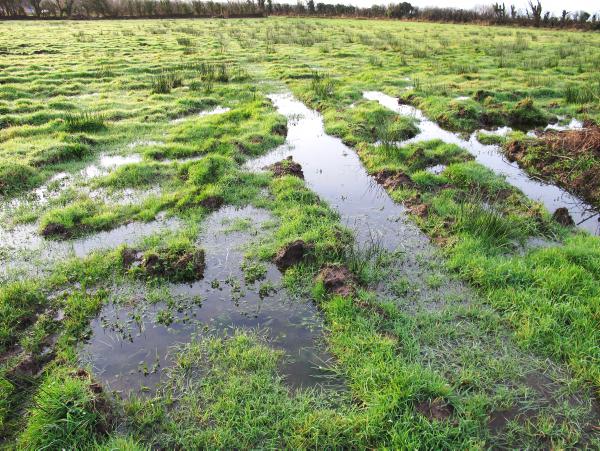
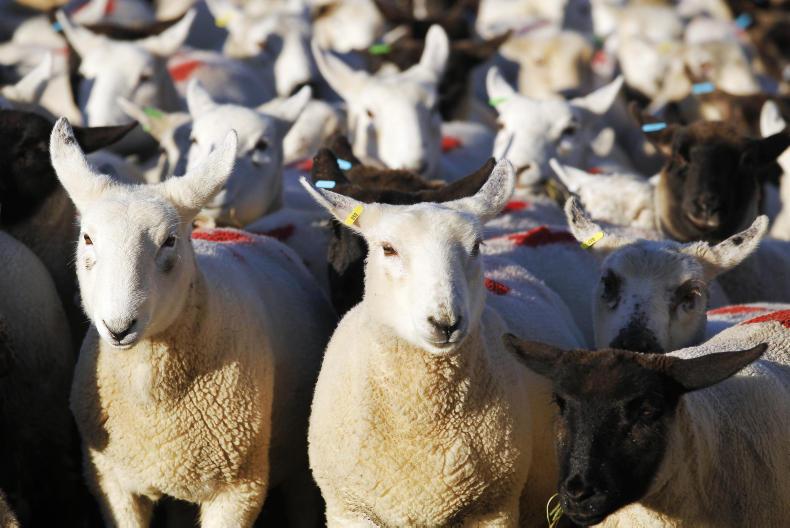
SHARING OPTIONS